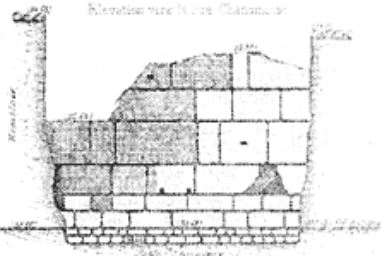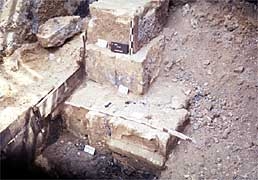- Home
- The city
- The late Roman city
- The wall
A portion of the ramparts discovered in December 1989 in the Rue de la Colombe.
© P.V. C.V.P. 1898.
A portion of the ramparts discovered in December 1989 in the Rue de la Colombe.
© P.V. C.V.P. 1898.
Foundations, made from reused stone blocks, of the rear part of the enclosure's south gate.
Photo: © C.V.P.
Foundations, made from reused stone blocks, of the rear part of the enclosure's south gate.
Photo: © C.V.P.
In several places, this wall was built on the Early Roman quay. Its foundations consisted of large stone blocks taken from monuments on the left bank-particularly the amphitheatre. The thinness of the wall, which was about 2 meters high, may indicate that it was topped by a corbelled wooden walkway, which naturally disappeared long ago. The existence of towers is a matter of conjecture.
These fortifications were restored and were used in the defence of the city during the great Viking siege of 886-887.
Several sections of the wall have been preserved and may be seen in the archaeological crypt in the square in front of Notre-Dame. A trace of a section of the wall has been reconstructed in the Rue de la Colombe.



